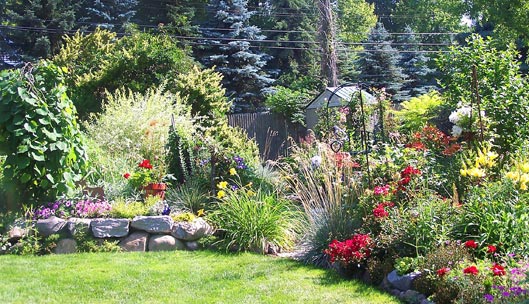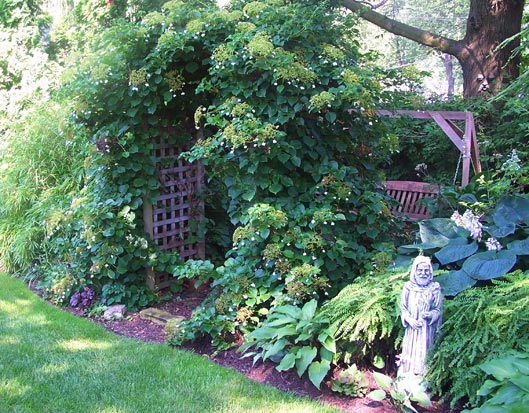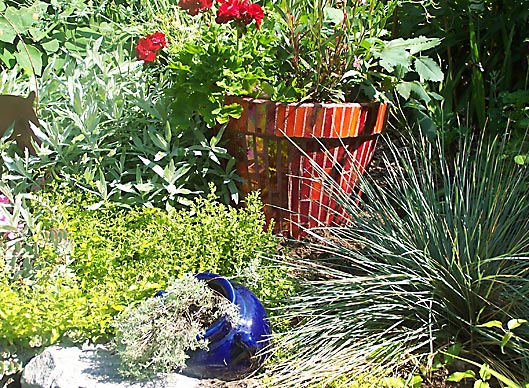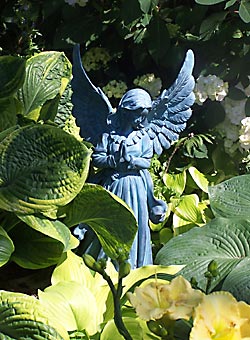 Sandie Parrott
Sandie Parrott
This is her berm garden with an entrance to her habitat area and frog pond. On the left side, there is a redbud ‘Lavender Twist’ and a white variegated willow (Salix integra ‘Hakuro Nishiki’). In the front center is the daylily ‘Corky’ for an old family dog. On the right side are blue oat grass, a red carpet rose, and the Asiatic lily ‘Linda.’ Sandie Parrott
Sandie Parrott
A restful area with a wooden swing hides behind this mature climbing hydrangea (Hydrangea anomala ssp. petiolaris). Sandie Parrott
Sandie Parrott
The bright blue urn, hand-decorated orange pot, and the varied textures and colors of plant leaves show off this corner of the garden.Linda Carson’s garden tips
by Sandie Parrott
The special things Linda Carson does to make her garden grow and bloom happily:
Water – The lawn sprinklers do the main watering, although hoses come out in dry spells and a watering can is always nearby for pots and special plants.
Soil – Disposed plant material goes back in the garden. It is composted, chipped, and used as mulch, or cut up and left in the garden. She rarely buys mulch and never buys soil. She either uses compost or borrows from another area that she is digging up. Her soil used to be sand or clay, but with all the compost and mulch over the years, it is all good soil now.
Fertilizer – Her favorite brand is Espoma. She uses their Rose-tone for not only roses, but clematis also.
Compost tea – Carson makes her own compost tea using a KIS (Keep It Simple) kit from www.simplici-tea.com. She buys their compost so she knows it has all the correct ingredients. She claims she treats with tea, “Depending on her mood, schedule and the weather.” She emphasizes that once the tea is made it shouldn’t be allowed to sit.
Pests – For animals, they have to live trap raccoons and rabbits. She said the rabbits like to eat her rose canes. She doesn’t really have a problem with regular insect pests; she uses no chemicals and just tries to hose them off.
Clematis – At first she had trouble growing them. She learned to plant them one to two inches lower than the original pot line and to use rose fertilizer. They are planted within beds so their roots are always shaded and cool.
Heavy hauling and carrying – Husband Cliff does the heavy stuff even though he isn’t really into gardening. He is into old cars and has a 1969 Corvette Stingray. And yes, she found a hosta named ‘Clifford’s Stingray’!
 Sandie Parrott
Sandie Parrott
A praying angel statue centers the Family Memorial Garden, surrounded by hostas, tulips, crocus, iris, and coleus, all named after members of her family that have passed away.
